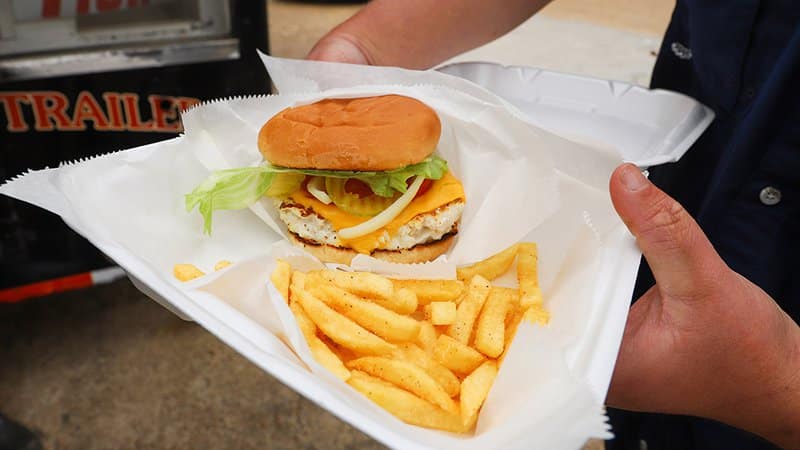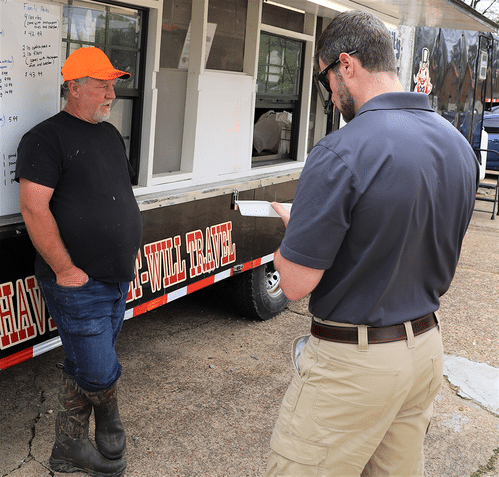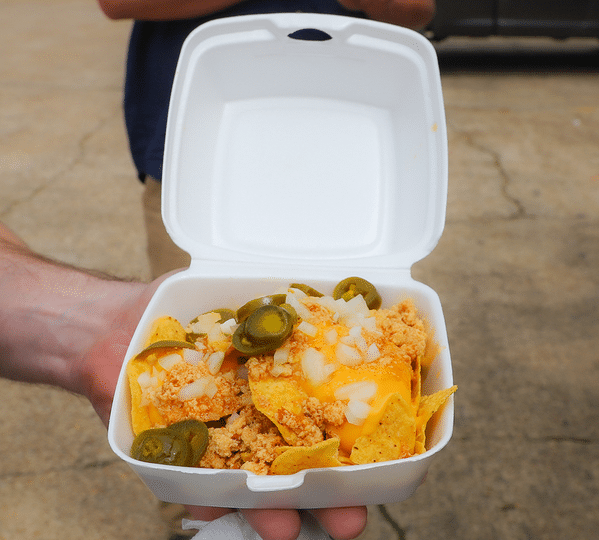Invasive carp find purpose at Forrest City fish market
BY Jim Harris
ON 04-25-2023

April 25, 2023
Jim Harris
Managing Editor Arkansas Wildlife Magazine

FORREST CITY – The nationally renowned late restaurant entrepreneur Dave Thomas created a different kind of beef patty and with it the Wendy’s burger chain that rivaled the biggest in the world. David Thomas, a commercial fisherman from Johnson County, also is wanting to introduce people to a different kind of meat patty.
David’s wife, Tasha, has dreamed up many uses for the meat known as copi, such as nachos, copi salad for a sandwich, and copi burgers. They hope to make the inexpensive protein product a mainstay on family dinner menus.
“You know what’s the most popular food source in the world? This,” Thomas says as he points to the copi. It’s not that way in America, he says, because of our expectations. We’ll buy beef, pork, turkey and other products, but are unfamiliar with copi. Copi is a new name applied to invasive carp: grass carp, silver carp, black carp and bighead carp.
Since their introduction into the U.S. in the 1970s, invasive carp have spread throughout rivers and lakes in the Mississippi River Basin, including many river systems in Arkansas. They can cause significant damage to aquatic habitats.
Thomas, who fishes commercially for catfish and buffalo on the Mississippi River and sells his catch out of the Forrest City Fish Market, gets the carp species mostly by accident. “If we fished for the jumpers” as they call silver carp, David said, “they’d tear up my nets.” Instead, they are the byproduct of fishing for buffalo and catfish, and David for the longest has had nowhere to sell them.
About a year ago Thomas began thinking about ways to commercialize that readily available copi. The result was a process that requires first cutting out the copi ribs as he would buffalo ribs, then taking the skinned leftover flesh and chilling it nearly to freezing before grinding it. He repeats that process and comes up with meat that looks like ground turkey, only lighter.
When cooked, it is white. It can be formed into patties, though they don’t stay together as well as beef might. Or it can be left in the ground form and cooked and added to nachos, the way one would use beef with the chips, cheese, onions and jalapeno peppers; or it can be mixed with mayo and diced pickle and substitutes quite well for a tuna salad or perhaps a dip with crackers. Those were some of the samples provided to six Arkansas Game and Fish Commission taste testers invited to Thomas’ market and large fish cooking van on a recent April Saturday.
The group was made up of Commissioner Stan Jones; Jamie Kindschuh, commercial fisheries biologist; Matt Horton, aquatic nuisance species coordinator; JJ Gladden, assistant chief for fisheries education; and Wil Hafner, an education specialist and an excellent cook in his own right; plus the writer of this article.

The first thing everyone noted, no matter which version of it they sampled, was that the copi presented no fishy taste. And, really, without any seasonings or even salt and pepper, it might not have any noticeable taste, only texture that was, indeed, like ground turkey.
But, because the copi we sampled wasn’t seasoned (other than helped with cheese on a burger and the nachos (along with peppers and onions), or with mayo in the copi salad sandwich), “This is a blank palette. It is wide open for what you can do with this,” Gladden proclaimed. The group thought of other ways of presentation, such as copi “cakes” like crab cakes, or as part of a gumbo. In patty form, it appears the extremely lean ground copi might require a binder, but then so does crabmeat for cakes.
Jones said he would have liked to have been able to try his patty with some seasonings but gave it good marks. The group performed taste tests on a copi cheeseburger and the fried copi ribs as well as other ground copi dishes. The copi salad sandwich, with a heavy dousing of mayo, may have emerged as the best.
Thomas told us most people who try copi like it and want to buy more. On the Saturday we visited he’d already sold out of his supply of raw fish. His restaurant-truck is open Fridays and Saturdays (they sell regular burgers and other food, too); the market sells the raw fish every day but Sunday. Thomas says he’s usually on the river at least four days a week, being the sole supplier of his business, including the carp that he grinds into copi.
“It’s fresh, never frozen,” he says with a smile. Where have we heard that one before?
Learn more about aquatic nuisance species and how the AGFC is trying to fight their spread at www.agfc.com/ans.
Recent News

Arkansas Wildlife Weekly Fishing Report
Jul. 10, 2025

Lonoke aquaculturist named to AGFC
Jul. 10, 2025
Subscribe to Our Weekly Newsletter E-mails
Don’t miss another issue. Sign up now to receive the AGFC Wildlife Weekly Newsletter in your mailbox every Wednesday afternoon (Waterfowl Reports are published weekly during waterfowl season and periodically outside the season). Fishing Reports arrive on Thursdays. Fill in the following fields and hit submit. Thanks, and welcome!
